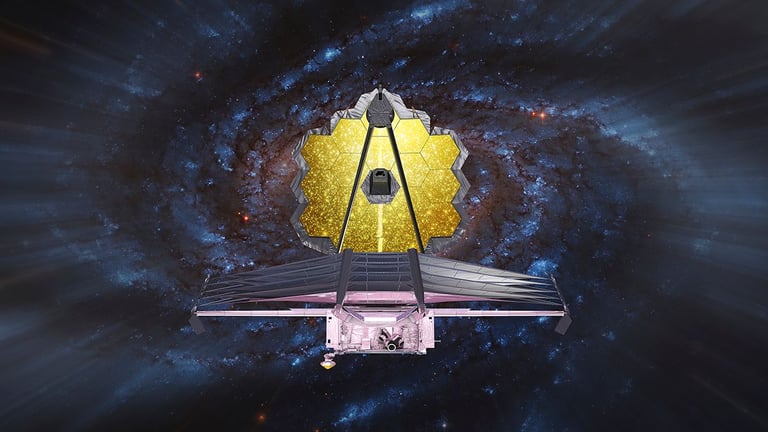JWST Unveils Earliest Known Galaxy, Challenges Galaxy Formation Theories
August 2, 2024
The James Webb Space Telescope (JWST), launched on December 25, 2021, is revolutionizing our understanding of astronomy.
Recently, JWST discovered the earliest known galaxy, named JADES-GS-z14-0, which formed approximately 290 million years after the Big Bang.
This discovery is part of the JWST Advanced Deep Extragalactic Survey (JADES), which has identified two of the oldest observed galaxies formed around 300 million years post-Big Bang.
The galaxy exhibits extraordinary star formation activity, with stars igniting around 200 million years after the universe's inception.
JADES-GS-z14-0's light originates from a large halo of young stars, indicating a rich history of star formation, with high levels of dust and oxygen present.
The findings suggest that the brightness of early galaxies may result from both active black holes and rapid star formation, rather than solely from black holes.
These discoveries challenge existing galaxy formation models, indicating that galaxies formed and matured much earlier than current cosmological theories predict.
Researchers published their findings on July 29 in the journal Nature, raising fundamental questions about galaxy formation in the early universe.
In February 2023, JWST data revealed six massive galaxies from 500 to 700 million years after the Big Bang, contradicting 99% of existing cosmological models.
JWST is optimized for near- and mid-infrared observations, essential for studying the early universe and penetrating dense dust clouds around newly forming stars.
Future space missions, such as ESA's Euclid and NASA's Nancy Grace Roman Telescope, are expected to further explore dark energy and the evolution of the universe.
Additionally, JWST has enhanced our understanding of the universe's expansion rate, known as the Hubble constant, revealing discrepancies known as the Hubble tension.
Summary based on 3 sources
Get a daily email with more Science stories
Sources

BBC Sky at Night Magazine • Aug 2, 2024
Has Webb broken cosmology? JWST is challenging our theories of the Universe and finding things that shouldn't exist
